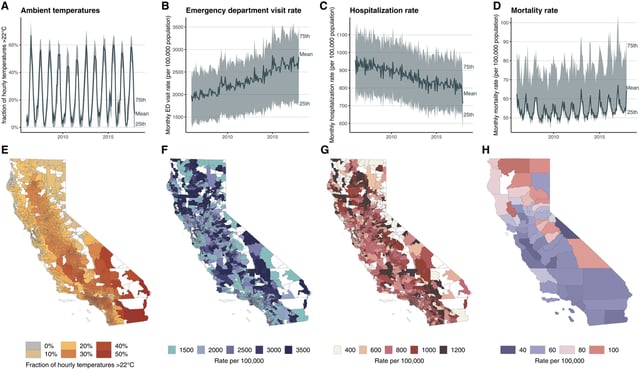Overview
- The joint UC San Diego–Stanford study analyzed over 123 million emergency department visits, 45 million hospitalizations, 2.9 million death records and daily temperatures across 1,500 ZIP codes from 2006 to 2017.
- Hot spells produced a linear increase in ER visits for conditions such as injuries, mental health crises and poisonings, exposing a broad morbidity burden beyond temperature-related deaths.
- A decline in extreme cold days delivered a net reduction in temperature-related fatalities, with projections showing 53,500 fewer deaths by 2050 under moderate warming.
- By midcentury, California is expected to incur 1.5 million additional heat-driven ER visits and $52 million in extra annual emergency care costs, partially offsetting savings from reduced hospitalizations and mortality expenses.
- Study authors urge implementation of age-specific heat warnings, expanded cooling centers and strengthened healthcare planning to address distinct vulnerabilities among older adults, children and young adults.
